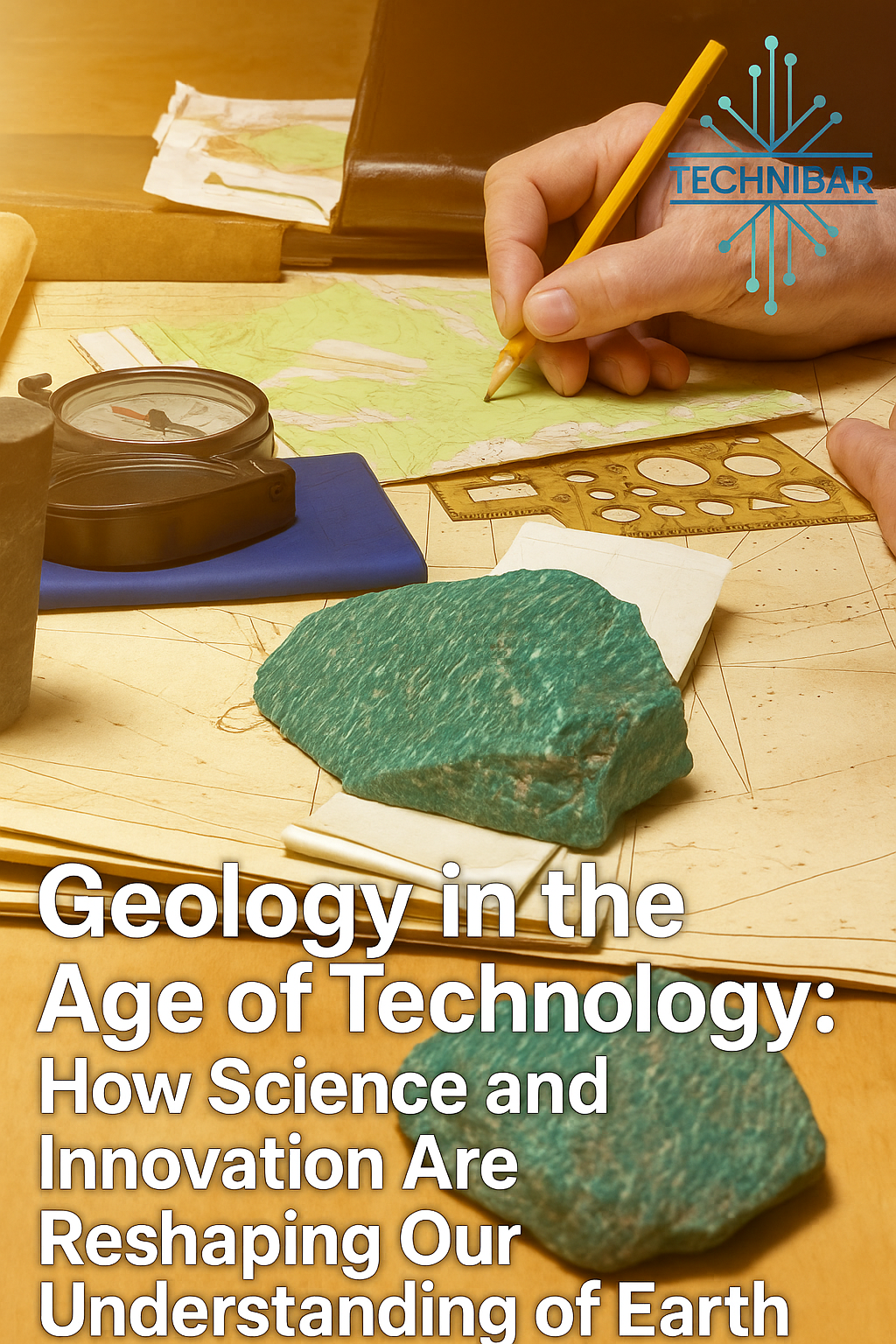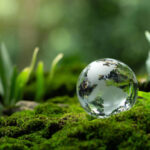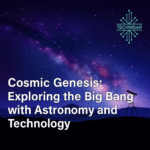In other words, geology has always taken the chief place in human development, the science of the earth. Since people began to create tools out of rocks and minerals, geology taught human beings how the earth is made of, and its structure. But in recent decades there has been a revolution of technology which has proceeded noiselessly: the study of the Earth by the geologists has been transformed in technique through technology.
Advances in imaging, System Information Geography (SIG), seismic modeling, drones, sensors, and artificial intelligence, however, have seen the discipline of geology cubed out of field notebooks and rock hammers into a new era of data, visualization, and simulation as the driving force behind discovery. Such an amalgamation of science and technology is also creating new frontiers in managing resources, conservation, hazard management and sustainable growth. This paper looks at the relationship between geology and technological innovation, the job of geology technicians, and the paradigm shifts that have persistently transformed Earth sciences.
Modern Earth Science to Classic Geology
Throughout most of its history, geology was based on field work, manual mapping and rock-sampling. These approaches worked well, but were small and so narrow. In the discovery of plate monuments in the 1960s there was a paragon shift. Scientists came to understand that the earth crust is separated into running plates other than revealing the findings concerning earthquakes, volcanism, formation of mountains, and the ridges. Meanwhile, the progress of computer capabilities allowed scientists to design models and validate theories. Technological advancements such as seismic imaging, satellite remote sensing and well-logging were able to give new and intuitive insights that were out of imagination. Now all of a sudden, geologists were able to describe as well as to predict the processes on Earth.
Technologies that are Transforming Geology
System Information Geography (SIG)
GIS has emerged to be an ultimate tool in contemporary geology. It enables scientists to store, process and visualize spatial information. Applications include:
- Digital mineral mapping.
- Landslide assessments.
- Tracking of deforestation and soil erosion.
- Developing environmentally opposite drilling plans.
Seismic Imaging 4D Seismology
The seismic reflection technologies have acquired the 3D forms providing an immensely clear image of the seismic crust of the Earth. Even more sophisticated is the 4D seismology, in which time is introduced enabling fluid properties to be traced in oil and gas reservoirs by geologists. The technology is useful in:
- Precise locating of Hydrocarbons.
- Observing reservoir behavior.
- Lower prices of drilling and less environmental danger.
Distant sensing and Satellites
Satellite and drone imaging technologies help to deliver a vital source of data for:
- Consider Quebec, Earthquake monitoring and monitoring of volcanic activity.
- Research on climate change.
- Land-use mapping.
- Possibilities to explore the resources in the inaccessible areas.
Technology of optic fiber and sensor
The new sensor technologies (in particular, fiber optic sensor) are making continuous monitoring of Earth processes possible. For example: Heat detector in oil fields, pursue thermal motion in the supplier. The sensors measure the stress build up of rocks in seismic zones.
The sensors are used in aquifers, looking at the dynamics of the water to assist in the urban population.
Brain imaging, Visualization, Virtual Reality
Visualization is now a must. Scientists are now able to form a three dimensional and virtual reality framework of rock structure and reservoirs.
- Assist multidisciplinary teams in working together.
- Create visualization of subsurface information so that decision-makers may visualize the data.
- Equip future geologists with the help of immersive technology.
Simulation Applications AI Modeling
The efficient computers and AI allow geologists to replicate such processes as the migration of magma, groundwater, or the formation of mineral crystals. The use of AI increases the realization of the pattern recognition within large datasets and quickens discovery and prediction of natural hazards.
Real-life opportunities of Tech-enabled Geology
Mining Industry
GIS and remote sensing based identification of ore deposits causes less environmental impact.
Exploration of Oil and Gas
4D seismic mapping keeps an eye to improve the efficiency of reservoir switching.
Disaster Management
Artificial Intelligence based earthquake models foresee the possible affected areas.
Urban Planning
Geologic Hazard Mapping aids construction in selecting sites not on fault lines, and on stable soils.
Difficulties in tech-driven Geology
Spite of progress, geology has problems:
Data Overload
Dubious amounts of data can overpower a researcher in case it does not get processed.
Costly
Seismic seismic and sensor technologies are costly.
Interdisciplinary Needs
The only way that we can find solutions to the Earth problems is by cooperating with physics, engineering, and computer science.
Sustainability
Technology will deal with exploration and environmental responsibilities.
Geology in the Digital Age in the Future
Integrated, dynamic modeling of the Earth made up of real-time sensor data, AI-driven modeling and immersive visualization is the new frontier in geology. This change will:
- Enhance forecasts of natural hazards.
- Maximize the use of resources.
- Increase surveillance of the environment.
- Give more specific information to the policy makers.
Job of Geology Technician
A major scientific discovery is the work of a network of people who render research possible. Geology Technicians play an essential role and assist geologists in sample collection, use of tools and equipment as well as data handling.
- Helping in field work through sampling of soil, rocks and water.
- Drilling and excavation with the use of machines.
- Dealing with geospatial data by using GIS software to build maps and analyze.
- Laboratory sample preparation of physical and chemical analysis.
- Preservation and maintenance of scientific equipment, as well as appropriate data logging.
- Promoting exploration of production on mine, oil, gas and environmental surveillance.
Most have an associate or bachelor degree in Geology, earth sciences or environmental studies and acquire hands-on experience in the lab and fieldwork assignments. Then with the experience they can become project managers, consultants or even professional geologists.
Conclusion
Geology is no longer a descriptive science, but really a high-tech science fuelled by data, sensors, simulations and visualization. Whether it be fiber optic sensors placed in oil wells or satellite images used to survey glaciers we are learning about our planet in a way never before possible due to technology. In a world, where being environmentally friendly and secure in resources is a worldwide concern, the combination of geology and technology does not only represent a scientific concept, it is a must. Geologists of the future will know how to interpret rocks, as well as use advanced tools to help humanity to overcome the most critical challenges.
FAQ’s
Q1: What is the place of technology in geology today?
With the use of technology, data acquisition is strengthened, accuracy is enhanced, it is real-time and one is able to simulate the processes on earth therefore making geology predictive and efficient.
Q2: How can seismic imaging be 4D?
It is a more advanced process on seismic which monitors changes in underground reservoirs with the passage of time which are used by the geologist and the engineers to ensure the moving direction of the gas, water or oil.
Q3: Is AI really useful to geologists?
Yes. Machine learning could help identify targets and trends in large piles of geologic data using artificial intelligence to check for unknown seismic areas as well as earthquakes, landslides, and mineral deposits.
Q4: how much education to become a Geology Technician?
Generally, an associate degree or a bachelors degree in geology, earth sciences or a related area, as well as training in the field and laboratory.
Q5: What relation does geology have to sustainability?
The management of the resources, conservation of groundwater, exploration of renewable energy sources and prevention of disasters depend on geology, thus improving the development of societies sustainably.








